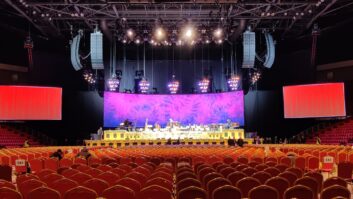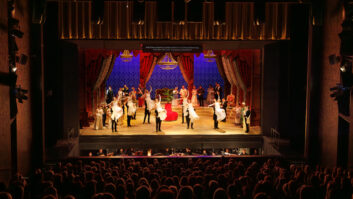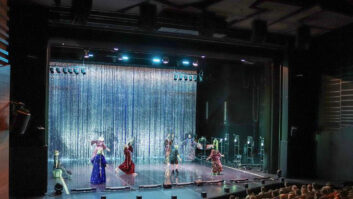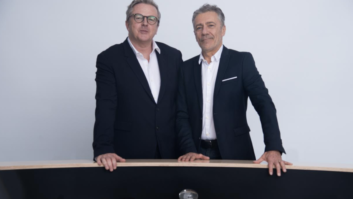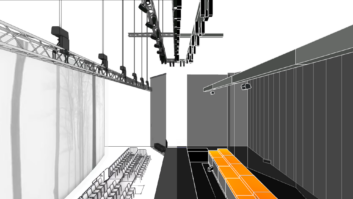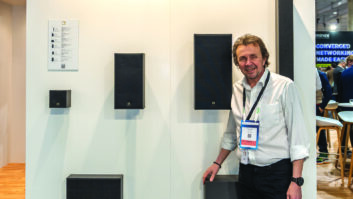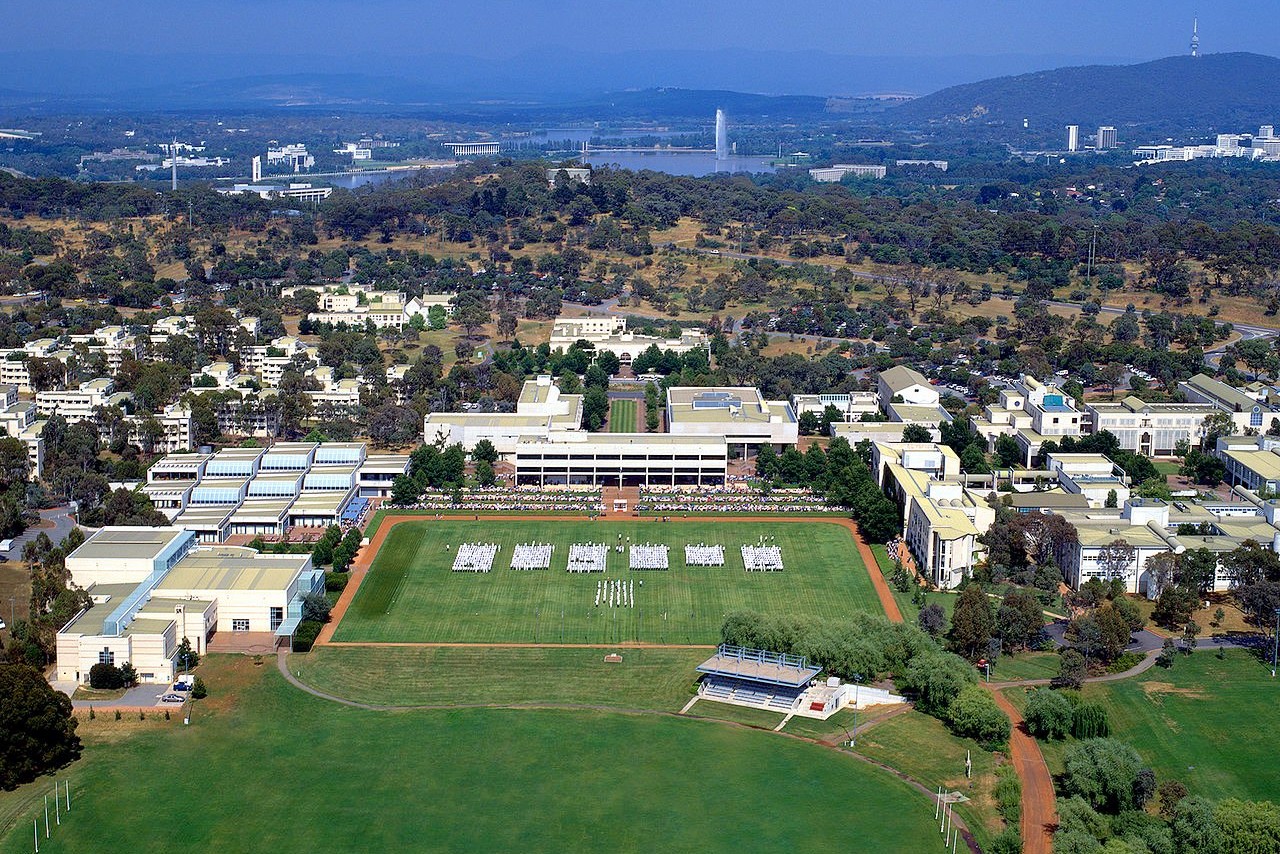
The Australian Defence Forces Academy in Canberra has recently opened a new 1,200-seat auditorium for conferences and presentations, fitted with an L-Acoustics audio system. The flexible space is constructed as a 160° arc, with sliding panels that allow it to be used either in combined mode or separated into two independent 800-seat and 400-seat venues.
Tim McCall, sales manager at L-Acoustics, noted: “Consultant GUZ BOX design + audio was brought in to design the audio system for the new space. The requirement was primarily for a system to provide vocal reinforcement, presentation sound and background music on a limited audio budget and with minimal visual impact. So it needed to be as compact as possible both in terms of both sizing and cost.
“As a fairly large space, the system needed to be able to cover the entire seated audience, both in combined mode and separate mode. And as it’s primarily a lecture theatre, good intelligibility in every seat was vital.”
L-Acoustics distributor and integrated technology solutions company, Hills SVL, was initially approached by GUZ BOX design + audio in 2012 to give recommendations on how to achieve the control, audio and visual requirements of the proposed auditorium, a process which took over 12 months from start to finish.
Hills brand manager – Pro and Commercial Audio, Gerry Gavros, explained: “Right from the beginning there were very strict criteria for architectural aesthetics, projection site lines and the operable wall requirements of the venue.
“We chose to submit an L-Acoustics system for consideration and our design team worked closely with L-Acoustics’ application engineers to offer a variable curvature line array solution.”
The final design comprised three arrays of six KIVA cabinets topped with an SB15M sub. The arrays are powered and controlled by just one L-Acoustics LA4X amplified controller. This allows for combined control of the arrays when the venue is in combined mode, whilst allowing each array to address distinct areas of the auditorium when it is in separate mode.
“Everything had to be flown, so each KIVA covers one specific area of the audience, from the first to the last row,” said Damien Jhusaz, Hills’ technical support engineer. “The three arrays can be used together when the room is combined, or separately when divided. It’s a very simple set up and, since there is one KIVA array taking care of each section of the audience, it delivers a very high level of intelligibility.”
Gavros concluded: “Tim Kuschel from GUZ BOX design + audio measured the system’s speech intelligibility on the last day of tuning/calibration and the values measured, which had an average STI (Speech Transmission Index) of 0.75, were exactly in line with the predicted results. When you move through the room, it sounds exactly the same everywhere and this is an exceptional result, given the various constraints of the project.”
Picture courtesy of Kurt Barnett

